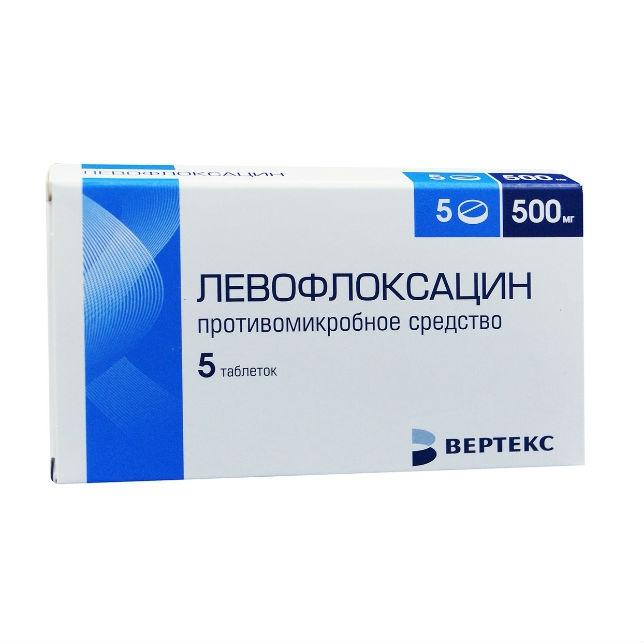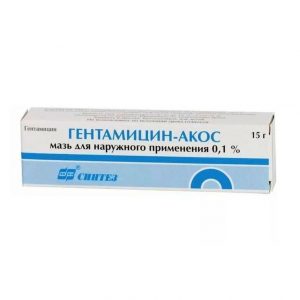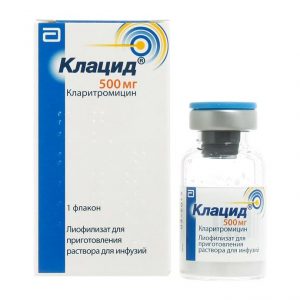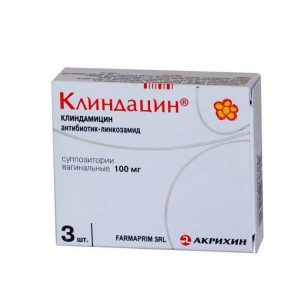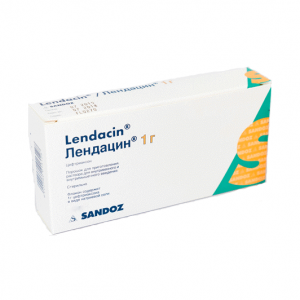Description
Release form
Film-coated tablets.
Packing
5 pcs.
Indications
Infectious and inflammatory diseases caused by microorganisms sensitive to levofloxacin:
– lower respiratory tract infections (exacerbation of chronic bronchitis, community-acquired pneumonia)
– acute maxillary sinusitis urinary tract infections – urinary tract , acute pyelonephritis)
– infections of the skin and soft tissues (suppurating atheromas, abscesses, boils)
– chronic bacterial prostatitis
– intra-abdominal infection
– complex therapy of drug-resistant forms of tuberculosis.
Contraindications
Hypersensitivity to levofloxacin and other fluoroquinolones, epilepsy, damage to tendons with previous treatment with quinolones, pregnancy, breast-feeding, childhood and adolescence (up to 18 years).
Precautions
Old age (high likelihood of concomitant decreased renal function), glucose-6-phosphate dehydrogenase deficiency.
Use during pregnancy and lactation
The safety of use during pregnancy and lactation has not been studied.
The drug is contraindicated during pregnancy.
If necessary, the appointment of the drug during lactation should stop breastfeeding.
Composition
1 film-coated tablet contains
Active ingredient:
levofloxacin hemihydrate in terms of levofloxacin – 500.00 mg
Excipients (core):
cellulose microcrystallic sodium – 60.00 microcrystallite – 60.00 00 mg,
povidone (polyvinylpyrrolidone) – 30.00 mg,
magnesium stearate – 10.00 mg,
croscarmellose sodium – 16.54 mg,
silicon dioxide colloidal – 6.00 mg.
Excipients (coating):
Opadry White – 30.00 mg, incl. polyvinyl alcohol – 14.070 mg, macrogol 3350 – 7.080 mg, talc – 5.220 mg, titanium dioxide – 3.630 mg.
Dosage and administration
The drug should be used orally during meals or in between meals, without chewing, drinking plenty of fluids.
Doses are determined by the nature and severity of the infection, as well as the sensitivity of the suspected pathogen.
Recommended dose for adults with normal renal function (creatinine clearance (KK)> 50 ml / min):
In acute bacterial sinusitis – 500 mg 1 time per day for 10-14 days
In exacerbation of chronic bronchitis – 250-500 mg 1 time per day for 7-10 days
In community-acquired pneumonia – 500 mg 1 or 2 times a day for 7-14 days
For uncomplicated urinary tract and kidney infections – 250 mg once a day for 3 days
For complicated urinary tract infections – 250 mg 1 time per day for 7-10 days
For chronic bacterial prostatitis – 500 mg once a day for 28 days
For infections of the skin and soft tissues – 250- 500 mg 1-2 times a day for 7-14 days
Intraabdominal infections – 500 mg once a day – 7-14 days (in combination with antibacterial drugs, acting on anaerobic flora)
Tuberculosis (complex therapy of drug-resistant forms) – 500 mg 1-2 times a day, the course of treatment is up to 3 months.
Side effects of the
From the digestive system: nausea, vomiting, diarrhea (including blood), indigestion, decreased appetite, abdominal pain, pseudomembranous colitis, increased activity of liver transaminases, hyperbilirubinemia, hepatitis, dis.
From the cardiovascular system: lowering blood pressure, vascular collapse, tachycardia, increased QT interval on the cardiogram, atrial fibrillation.
From the side of metabolism: hypoglycemia (increased appetite, increased sweating, trembling, nervousness), hyperglycemia (dry mouth, thirst, increased urination, fatigue, blurred vision, dry or itchy skin, arrhythmia).
From the nervous system: headache, dizziness, weakness, drowsiness, insomnia, anxiety, paresthesia in the hands, fear, hallucinations, confusion, depression, motor disorders, convulsions, peripheral sensory neuropathy, peripheral sensory-motor neuropathy, mental disorders with behavioral disorders causing self-harm, including suicidal thoughts and suicidal attempts, extrapyramidal disorders, agitation (excitement), nightmares.
On the part of the sensory organs: impaired vision, hearing, smell, taste and tactile sensitivity, ringing in the ears.
From the musculoskeletal system: arthralgia, muscle weakness, myalgia, tendon rupture, tendonitis, rhabdomyolysis.
From the urinary system: hypercreatininemia, interstitial nephritis, acute renal failure.
From the hemopoietic organs: eosinophilia, hemolytic anemia, leukopenia, neutropenia, agranulocytosis, thrombocytopenia, pancytopenia, hemorrhage.
Allergic reactions: itching and hyperemia of the skin, swelling of the skin and mucous membranes, urticaria, malignant exudative erythema (Stevens-Johnson syndrome), toxic epidermal necrolysis (Lyell syndrome), bronchospasm, anaphylactic shock, allergic pneumonitis, vasculitis.
Other: asthenia, exacerbation of porphyria, photosensitivity, persistent fever, leukocytoclastic vasculitis, development of superinfection.
Drug Interactions
Quinolones can enhance the ability of drugs, including theophylline, non-steroidal anti-inflammatory drugs, to lower the seizure threshold. When co-administered with fenbufen, higher concentrations of levofloxacin are observed than with motor therapy.
The effect of levofloxacin is reduced by drugs that inhibit intestinal motility, sucralfate, magnesium or aluminum-containing antacids, iron and zinc salts.
Taking glucocorticosteroids increases the risk of tendon rupture.
Levofloxacin enhances the anticoagulant activity of warfarin.
The elimination (renal clearance) of levofloxacin is slightly delayed by the action of cimetidine and probenecid due to the possible blocking of tubular secretion of levofloxacin in the kidneys. It should be noted that this interaction is of clinical importance, especially for patients with impaired renal function.
Levofloxacin increases the elimination half-life of cyclosporine.
Concomitant use of levofloxacin and hypoglycemic agents leads to changes in plasma glucose (hypoglycemia and hyperglycemia).
When used with drugs that prolong the QT interval (antiarrhythmic IA and III classes, tricyclic and tetracyclic antidepressants, neuroleptics, macrolides, antifungal, imidazole derivatives, some antihistamines, including astemizole, terfenadine, ebastine) QT interval may be prolonged.
overdose
Symptoms:
confusion, dizziness, disturbances of consciousness, convulsions, nausea, vomiting and erosive mucous membranes are possible. Studies have shown that the use of levofloxacin at doses in excess of the average therapeutic may prolong the QT interval.
Treatment:
is symptomatically treated if necessary. Levofloxacin is not excreted in hemodialysis, peritoneal dialysis and constant peritoneal dialysis. There is no specific antidote.
Storage conditions
Store the product in a dry, dark place at a temperature of no higher than 25 ° C. Keep out of the reach of children.
Expiration
2 years.
Active ingredient
L vofloksatsyn
Terms of delivery from
pharmacies Prescription
dosage form
drug vein form
tablets
